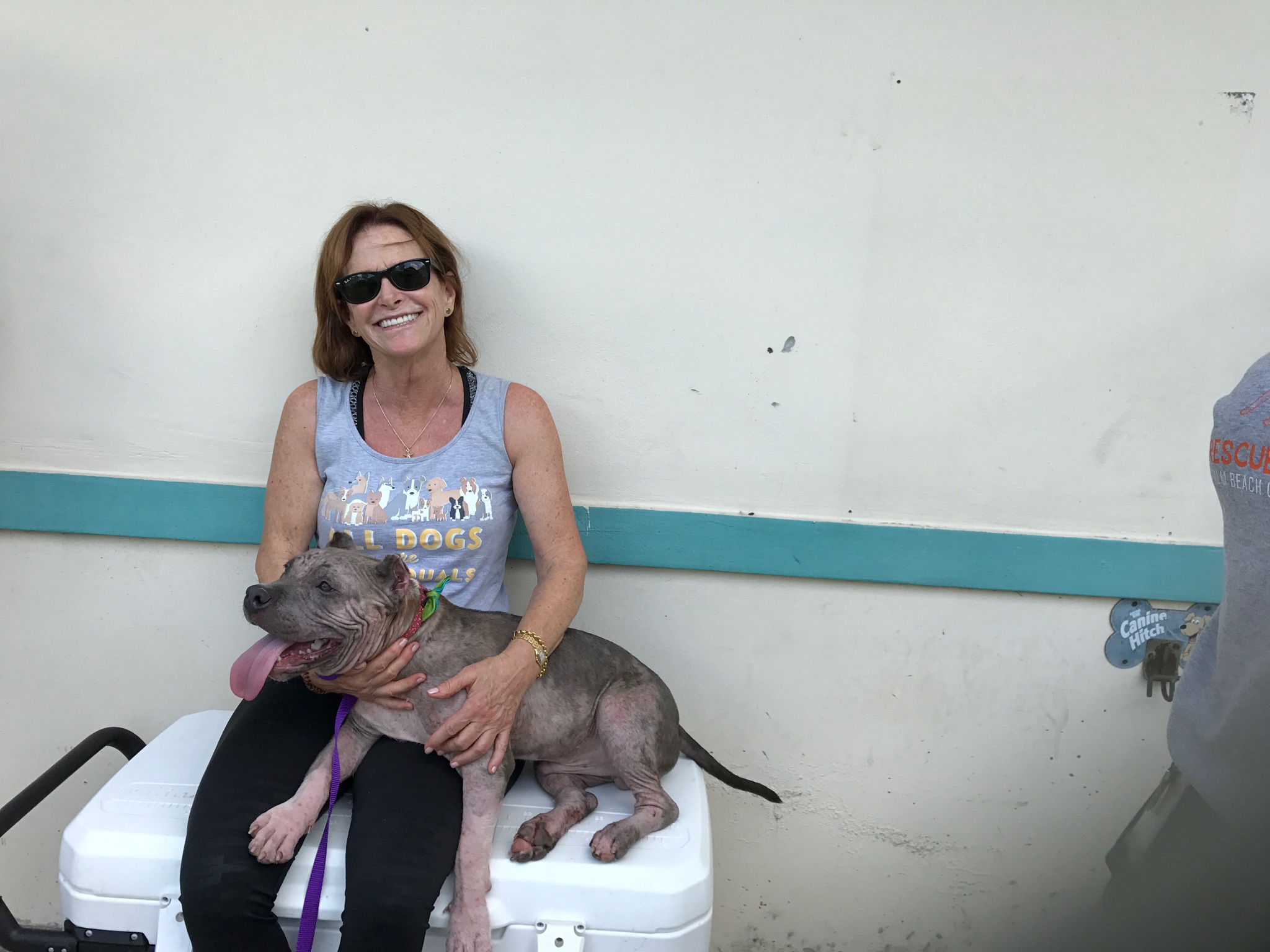Recently we wrote a blog about “pit bull” dog websites and the damage that well-intentioned advocates cause when they post outdated information about the dogs.
A prime example of this is the perpetuation of the old myth that “pit bull” dogs have a higher tolerance for pain than other dogs.
One advocacy website writes, “Sometimes presented as a negative trait, the fact that pitbulls have a high pain tolerance makes them exceptional family dogs. They easily (and happily) put up with the rough play of children without reacting.”
Tragically, the myth of high pain tolerance is also used on pro-BSL websites to justify why “pit bull” dogs are uniquely different, dangerous, and therefore need to be regulated. It’s even shown up in court as justification for bans via claims that their supposedly high tolerance for pain makes them uniquely dangerous in comparison to other dogs.
Let’s set the record straight, shall we?
There is nothing unique about the neurological system of a “pit bull” dog. All dogs, regardless of breed label, experience pain. How each individual dog responds to that pain will vary, but the response cannot be accurately predicted by physical appearance or breed.
Tufts Veterinary Medicine Magazine examined the issue of pain in their Winter 2013 issue. Here’s what the experts had to say:
“Pain medicine as a veterinary specialty is relatively new. As recently as a decade ago, most veterinarians assumed that animals didn’t feel pain, or at least experienced it differently than humans. Now all evidence points to the contrary. Research has shown that animals and humans have similar neural pathways for the development, conduction and modulation of pain, making it pretty likely that our pets experience pain in much same the way we do.”
This tells us that all animals experience pain. All of them.
The perception of pain is unique to each individual: human or dog. Humans have the choice to be stoic and decline treatment for issues such as chronic pain, but our dogs can’t speak up for themselves. When we perpetuate the myth that “pit bull” dogs are different in the way they experience pain, we may wind up missing an opportunity to provide them with the care they need.
The article goes onto say that even in people, pain is often undertreated. “If we’re looking at practically half of the human population that’s in pain getting undertreated, I have to believe that over 95 percent of animals in [chronic] pain are not getting proper treatment,” says Michael Petty, president of the International Veterinary Academy.
While all dogs will express pain differently, this doctor is saying that an enormous amount of our pets are not getting relief! That is a lot of “stoic” animals or, more likely, a lot of owners that are either ignoring or not observing subtle symptoms of pain (for more on how pain may present in a dog’s body, please read the full article).

So, not only do the experts in companion animal pain tell us that there is no truth to the idea that certain dogs feel pain differently than others, there is also NO benefit to promoting the myth that “pit bull” dogs have a high pain tolerance.
This high pain tolerance myth implies:
– That parents can allow their children to inappropriately handle “pit bull” dogs in a rough manner. The experts on family dog safety tell us that this type of rough play leads to dog bites – no matter what breed or mix the dog may be. To reduce dog bites and increase pet retention, children should always be taught to treat dogs gently and respectfully – “pit bull” dogs included.
– That dog owners should be alarmed if their “pit bull” dog does not “happily” accept rough play from children. If the dogs react, something must be wrong with them, right? Wrong. All dogs deserve to be handled respectfully and will have varying tolerance levels for physical play. There’s nothing wrong with dogs that prefers gentle play (or no play at all) with children.
– It suggests that they are biologically different than all other dogs. For people that are afraid of “pit bull” dogs, it suggests the dogs are uniquely capable of causing damage because they cannot be stopped by regular management techniques.
– It makes a convenient excuse for humans that wish to exploit them and/or abuse them. It should go without saying that we should never justify cruelty by suggesting the victims have a high tolerance for being abused.
This pain myth does nothing to help “pit bull” dogs. There are many ways to promote the wonderful pet qualities and proper care of “pit bull” dogs without having to resort to perpetuating the pain tolerance myth.

Now that we know better, we have an obligation to consider the way we communicate on behalf of the dogs and the information we’re sharing. The dogs are depending on us to stop adding to their problems by recycling old content like the myth of high pain tolerance.
However, if you’d like to discuss pain in dogs, here are some talking points:
• The perception of pain is unique to each individual, human or dog. Factors that affect each dog’s individual response to pain include age, gender, and health status. Activities they’re engaged in might also affect how dogs perceives pain. For example, if dogs are engaged in work or a sport, it can effect how they perceive pain in that moment (just like humans).
• Recognizing and determining the source of pain in dogs can be a challenge, especially since the early signs of pain can be subtle. One of the best ways to assess pain in any dog is to know what’s normal for them. In your everyday life, really pay attention to your dog’s regular behavior and habits, so that anything abnormal will be obvious to you. There is nothing better than being familiar with an individual dog in order to recognize a change in their behavior and the symptoms of pain.
• There is nothing unique about the neurological system of a “pit bull” dog. All dogs, regardless of breed label, experience pain. How each dog responds to that pain will vary, but the response cannot be predicted by physical appearance or breed.
The veterinary experts are telling us that like humans, individual dogs have varying pain tolerance levels. It’s time we all kick this tired pain generalization to the curb once and for all. It’s not helping the dogs – it’s hurting them.






